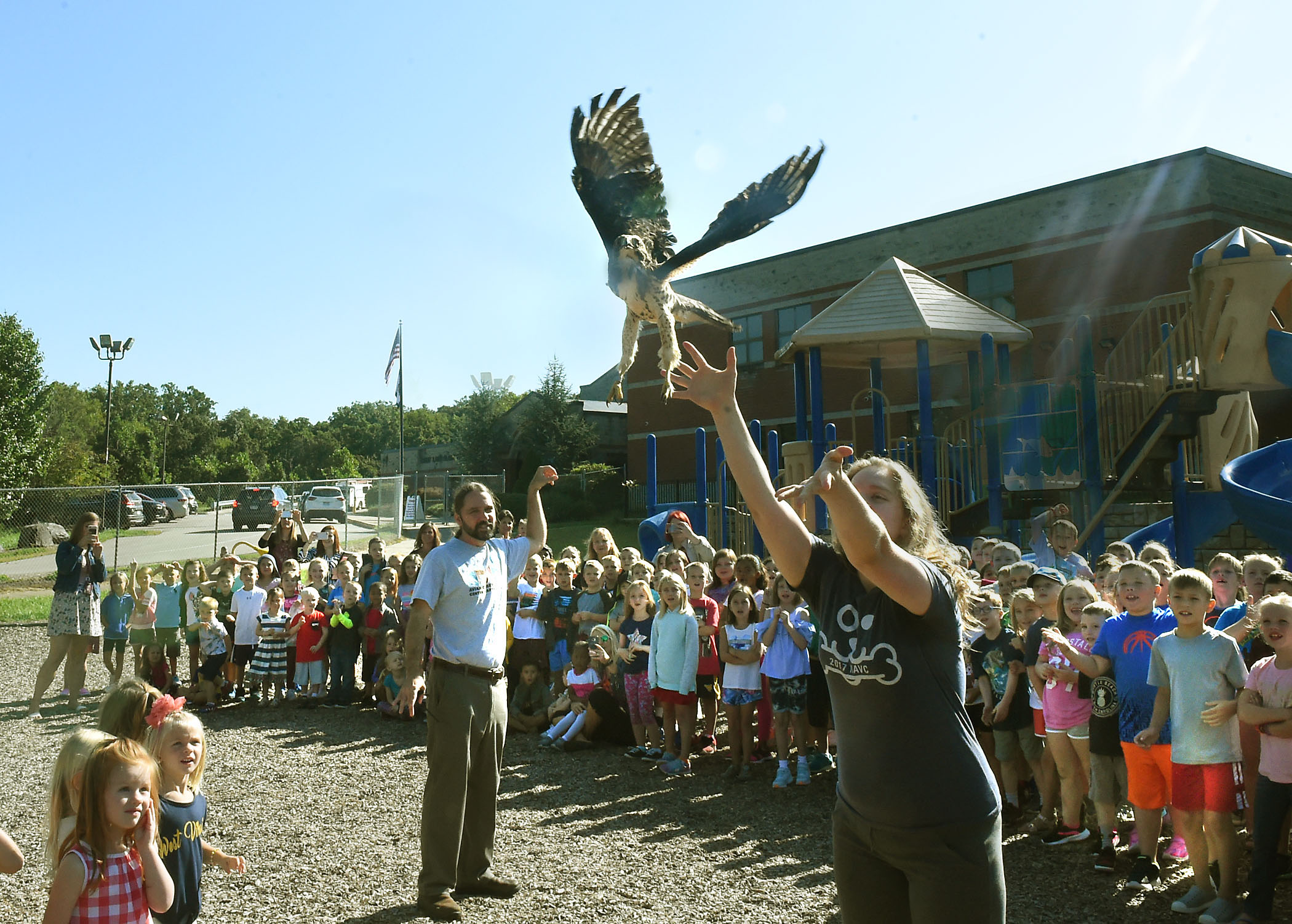A rehabilitated broad-winged hawk was released back into the wild in front of students at Cheat Lake Elementary on Thursday — just in time for the hawk to migrate home.
This particular raptor was found about a month ago by an officer of the West Virginia Division of Natural Resources in Pocahontas County, according to Jesse Fallon, a veterinarian and volunteer with the Avian Conservation Center of Appalachia.
The unnamed bird — there are simply too many birds taken in by the ACCA to name; 375 so far this year — was struck by a car and suffered head trauma but no broken bones. The ACCA fed the bird, let it rest and, using a special leash, put it through physical therapy before releasing it, Fallon said.
While Fallon taught the students about broad-winged hawks, migration and the ACCA’s mission, the hawk waited calmly thanks to a hood. The predators rely on their vision to hunt and the hood “turns the lights out” and calms it, Fallon said.
Gloves were also needed when handling the hawk because of its sharp talons.
The raptors breed in the eastern part of North America and are among the earliest to migrate home to the Central and South Americas, Fallon told the Pre-K to second grade students. The birds often leave in September and won’t return until May.
Broad-winged hawks migrate home by flying in great “kettles,” which often contain thousands of the birds. ACCA volunteer LeJay Graffious said he once saw about 4,000 hawks at Dolly Sods. The birds ride air columns and the air currents, stopping before sunset and resuming when the sun rises.
The hawk release ties into migration, which is a topic Anna Kimble’s students learn about each year. This year, she collected three monarch caterpillars. Two of them have entered their chrysalis and on Thursday, the third was crawling around its cage in Kimble’s classroom looking for a spot to transform.
Broad-winged hawks are named for their characteristic wings. Fallon told the students scientists often name newly discovered animal species after physical characteristics. The broad-winged hawk’s genus-sharing brother, the red-tailed hawk, is also named after a defining physical feature.




